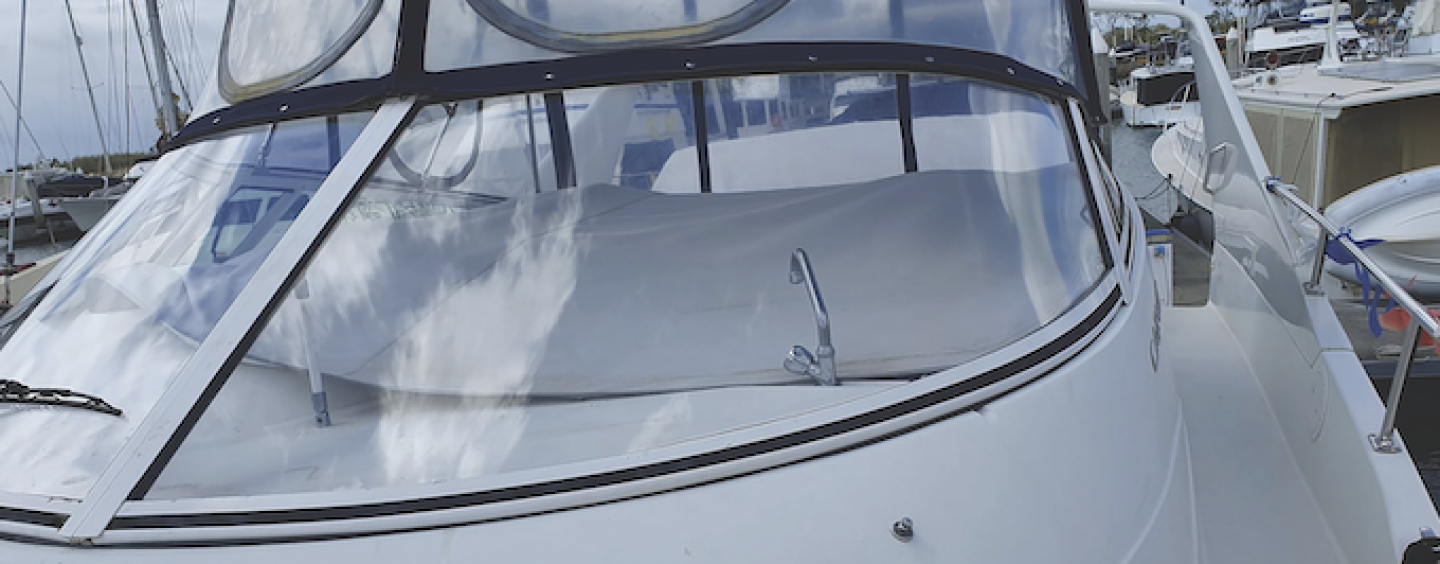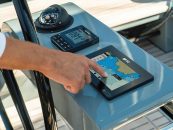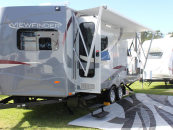If receiving recognition and adoration is a sign of being appreciated, then windscreens might well be one of the most underappreciated parts of a boat. Like most things that are underappreciated, nobody ever notices when a windscreen is doingIf receiving recognition and adoration is a sign of being appreciated, then windscreens might well be one of the most underappreciated parts of a boat. Like most things that are underappreciated, nobody ever notices when a windscreen is doing what it should be. However, if there is something wrong, it quickly becomes noticeable and can impact the entire boating experience.
People often overlook windscreens. “Boat owners need to look after the glass, seals and frames. All three are like every other component on the boat – they will only work as well as you look after them,” according to Peter O’Toole, owner of Blue Water Windscreens (Aust).These days, windscreens can be made of different materials including acrylic, glass and polycarbonate. “Toughened glass is becoming more common in larger trailer boats but it can get expensive. Polycarbonate is not commonly used in trailer boats because it scratches more easily than acrylic. But its advantage is that it’s impact resistant, so it’s a light and cheaper alternative to glass,” explains Peter.Out of the three types, Peter reveals that he prefers acrylic. “Acrylic windscreens are the most cost-effective. It’s the best all-rounder. It’s cost-effective, light, durable – and, if you look after it properly, you will get more than 10 years out of it!” But while acrylic is the most popular and the one Peter recommends in most cases, the final choice does depend on customer requirements.
In terms of the best brands for a windscreen, seals and frames, there are plenty of good ones on the market for each component. However, in Peter’s opinion, the old adage holds true: you get what you pay for. Moreover, as far as working on different sized boats, he explains, “There is not much difference between the requirements for a trailer boat to a 40-foot boat, except for the size of the material and the timeframe required.”
Windscreens are a key part of a boat’s appearance, and as boat design evolves, so do windscreens and windows. The options are overwhelming: curved windscreens; sliding or hinged; custom hatches and windows; tinting or no tinting; green glass; and much more. Peter shares his insights: “I think curved windscreens look great. Most of the windscreens we make are curved and, in some cases, they can be easier to make than flat panel ones. From a visual perspective, they can change the entire look of the boat and make it look classier. Sliding windows are a good way to get airflow in the boat cabin, and I would recommend them above hinged windows because there is less chance of them leaking. Custom hatches and windows are another way you can add style to your boat because they can be made to suit the lines of your boat better than a generic off-the-shelf product. Whether to use tinting or green glass, that is entirely the preference of the customer – either option can be suitable and look good.” It is worth noting that most windscreens on the market today are also ultraviolet (UV) tolerant with relevant ratings.
One of the most common – and important – questions about a windscreen or window is, ‘When has it come to an end?’ Peter advises, “It does depend on the damage. Most times, you are better off spending a little more and replacing the whole windscreen. We do not bother repairing chipped or cracked windscreens ourselves. In most cases, they are beyond repair at that point anyway. They can never really be fully restored. In the long run, it is more cost- effective to replace it than repair it.”
Peter adds that there is also no easy way to repair a seal that is worn or leaking – even if we would like there to be one. The only method is to disassemble the windscreen, clean all the old sealants off and start again, reassembling with new seals.
While he acknowledges that some people prefer the DIY method, Peter is convinced that it sometimes ends up being a waste of money, and, more crucially, waste of time. “We do supply parts for DIYers who want to have a go at building their own windscreens. But, as capable as some of them are, we found we were spending more time explaining to them how all the components worked together. It was probably easier for everyone concerned for us to actually make the windscreen for them! We still do supply the parts here and there for people who want to do a quick repair, but it will save you time just getting us to do it.”
Perhaps not surprisingly, Blue Water Windscreens is most regularly called upon to install new windscreens on trailer boats. With 15 years of experience in everything windscreens, Peter is qualified to provide clear answers to your most difficult questions.
Blue Water Windscreens is based on Burnside Road in Yatala and is capable of installing and repairing windscreens for most boats, no matter their vintage. They cut and shape windscreens using machines or by hand.
By Chris Logan
To book in for repairs, get a quote or ask for advice, call Blue Water Windscreens on (07) 3382 7883.
Published in the April-July 2020 print edition.



























